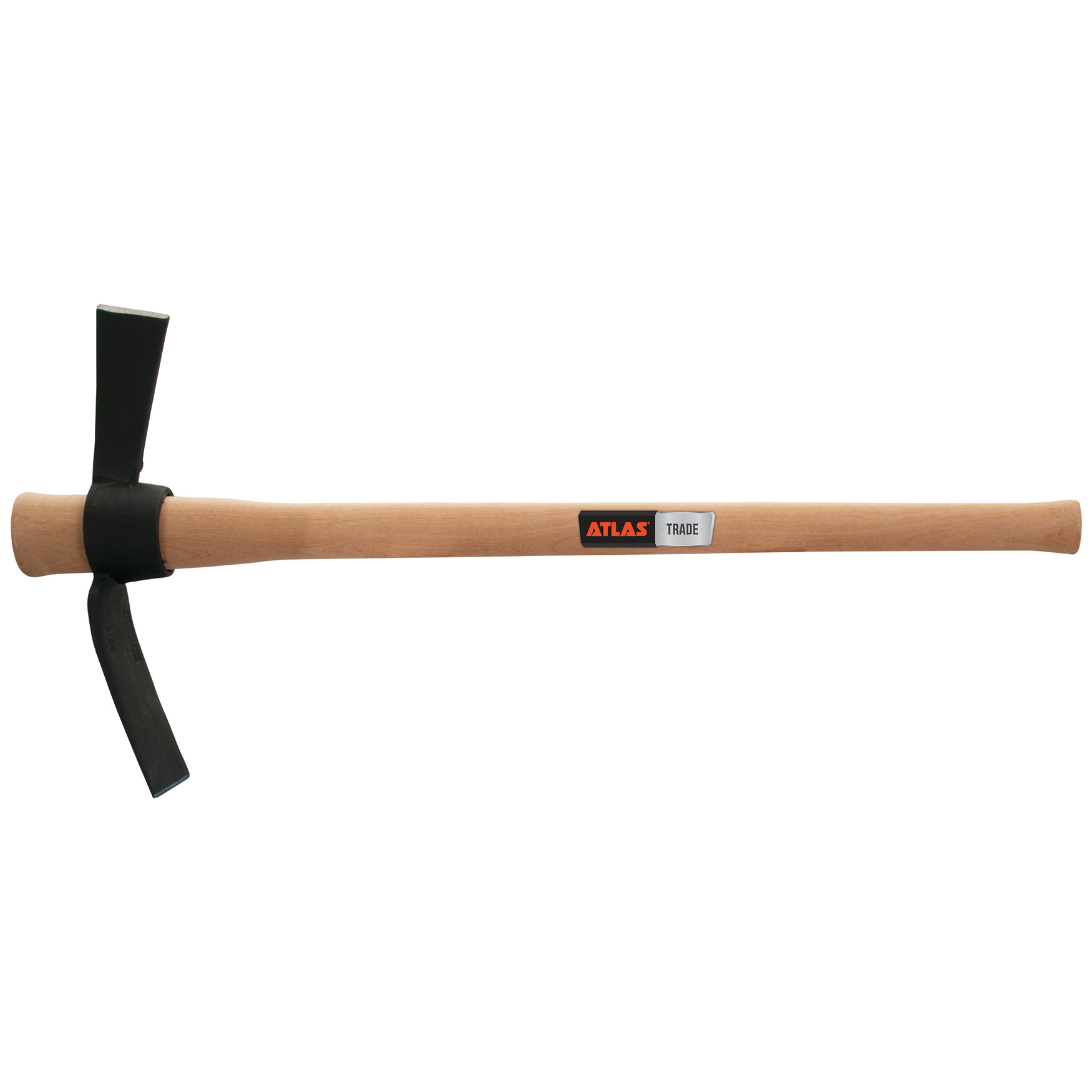


They can be used to chop into the ground with the adze and pull the soil towards the user, opening a slit to plant into. The Pulaski was designed as a combination tool for wild land firefighting, combining the features of the axe and the grub hoe, so that the grunt on the line would have greater flexibility with a single chopping and grubbing tool he could carry and use. It a powerful tool with sharp blades that can cleanly cut anything that comes it front it. The form of the head determines the kind and uses of the mattock. It's got me wondering, this thing might have been made before the turn of the 20th century. It is the best mattock we looked at, based on features and design. It may be cognate to or derived from the unattested Vulgar Latin matteūca, meaning club or cudgel.

The use of a mattock can be tiring because of the effort needed to drive the blade into the ground, and the amount of bending and stooping involved. Mattocks made of whalebone were used for tasks including flensing – stripping blubber from the carcass of a whale – by the broch people of Scotland and by the Inuit. Their shape was already established by the Bronze Age in Asia Minor and ancient Greece. All three are invaluable tools around the farm. It is also commonly known in North America as a "grub axe". A mattock head typically weighs 3–7 lb (1.4–3.2 kg). They were probably used chiefly for digging, and may have been related to the rise of agriculture. Here's a shot of it with my semi-custom Predator Tools "Big Red" shovel and my Ames potato hook. , CS1 maint: BOT: original-url status unknown (, "The True Story of the Pulaski Fire Tool", "Everything on 'Naked and Afraid' Is Real-and I Lived It", (tool)&oldid=975643941, Creative Commons Attribution-ShareAlike License, This page was last edited on 29 August 2020, at 17:23. Similar to the pickaxe, it has a long handle and a stout head which combines either a vertical axe blade with a horizontal adze (cutter mattock) or a pick and an adze (pick mattock).A cutter mattock is similar to a Pulaski.It is also commonly known in North America as a "grub axe". In 1920 the Forest Service began contracting for the tool to be commercially manufactured but use remained regional for some years. It's a good idea to know these terms and what they mean because each component of an axe head - the blade/bit, toe, heel, and butt - can have a different shape, size, and sharpness depending on the task at hand.INC VAT. For axe heads with only a single edge, the side that's not sharpened is known as the butt. The top corner of the blade is known as the toe, whereas the bottom corner is the heel. First of all, the blade or bit is the sharpened end of an axe head designed for cutting or splitting, and some are even made with a double-bit where both ends are sharpened.

To best understand the design and intended use of any given axe, let's take a good, long hard look at the head and get to know its parts. While a typical axe handle is made from a handful of materials, such as wood, fiberglass, steel, or plastic, most quality axe heads are forged from the strength of steel. Constructed of two main components, a handle and an axe head, today, there are countless styles of axes to help tackle a wide variety of tasks. Axes are an important tool that humankind has relied on for centuries.


 0 kommentar(er)
0 kommentar(er)
